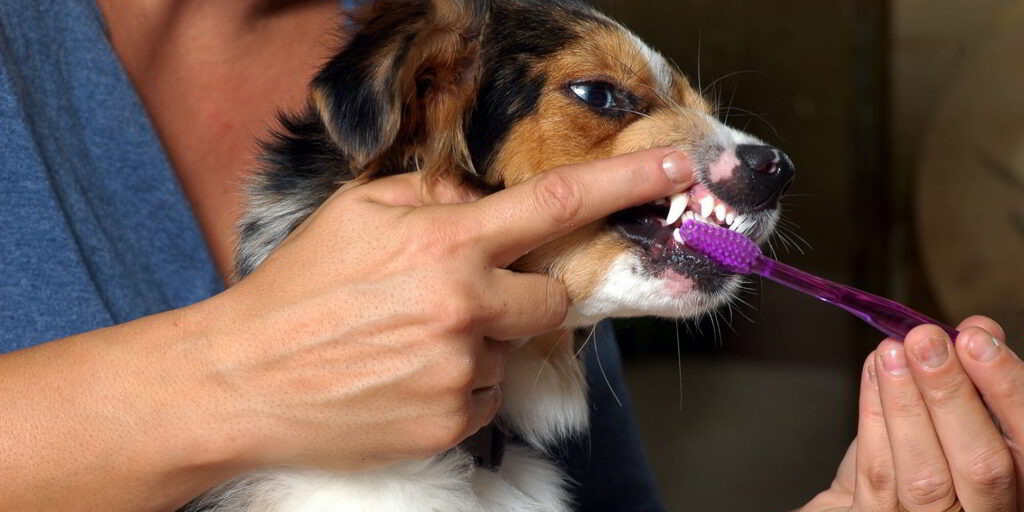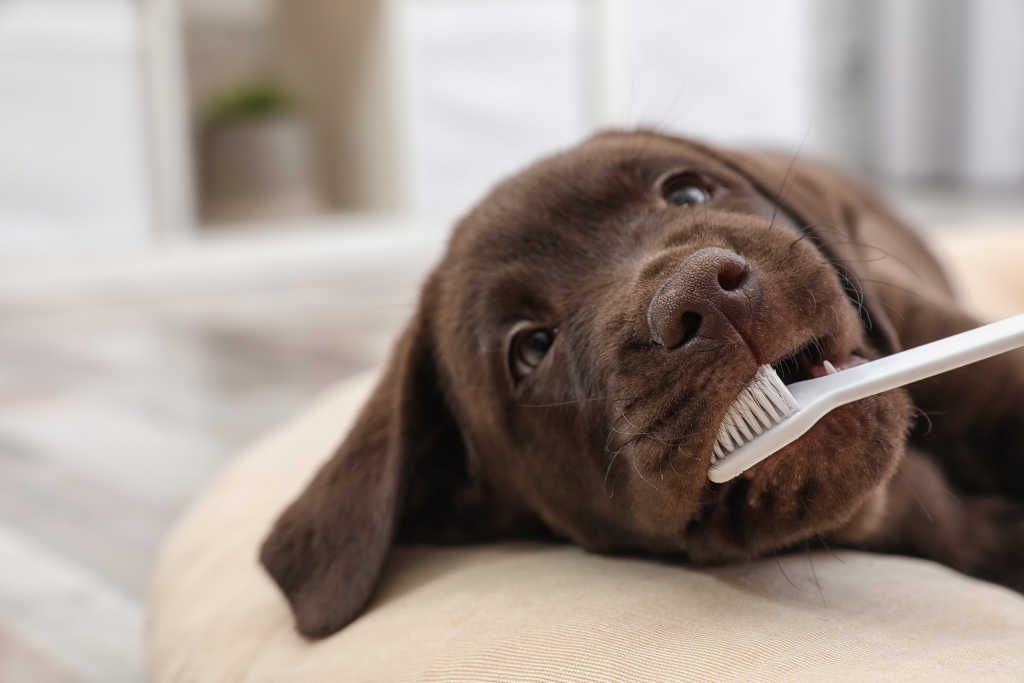Puppy grooming goes beyond hair care and grooming and includes brushing your puppies’ teeth. Puppy breath can be a pleasant aroma when the pooch is quite small, but while a stinky mouth odor means you won’t welcome those close snuggles, it also points to potentially painful and dangerous dental problems.
By the time dogs reach the age of three years, 80 percent of them have some amount of dental disease. That makes sense because dogs don’t brush their teeth, and they tend to gulp rather than chew their food. Just think what your teeth would look like in three years if you never brushed!
Since adult dogs often object to tooth brushing, it’s best to start puppies with a dental hygiene program while they’re too little to argue and consider it a game or a treat.

Routine cleaning is available from most veterinarians and involves ultrasonic scaling, polishing and sometimes fluoride treatment or antibiotics, especially if teeth are pulled. But the best way to prevent dental disease as your puppy grows up is to provide home treatment. Here are six tips to keep your puppy’s teeth clean and bright.
Home Dental Care
Crunching dry food reduces dental problems by about 10 percent, compared to canned meals that stick to teeth. If you feed both, encourage your pup to crunch the dry after the wet appetizer.
Many dogs relish healthy people foods like raw veggies or fruit, and chewing on these “detergent” foods can help scrub teeth clean. Offer your puppy carrots or apple slices for healthy natural dental snacks.
Special “dental diets” and treats available in grocery stores or dispensed from the veterinarian can help especially with dog breeds that seem more prone to dental issues like Yorkshire Terriers. Look for sodium hexametaphosphate (sodium HMP) listed in the food which helps prevent plaque from attaching to teeth.

A wide range of commercial dental chews (rawhide, ropes, treats) available for dogs may also prevent doggy breath. Some are infused with special enzymes that kill bacteria and help prevent plaque. Also, ask your vet about dental rinse products.
Tips
- Most veterinary dentists dislike cow bones, pig hooves and other hard chew objects that may break your puppy’s teeth. Sterilized bones designed for doggy dental care, though, may be just the ticket.
- Offer your dog an approved object to chew on that also has dental benefits, like the “dental toys” that contain a nubby surface designed to scrub the teeth.
How To Brush a Dog’s Teeth
When your dog struggles with tooth problems, the best way to maintain dental health is to brush your puppy’s teeth. Here’s how:



0 Comments